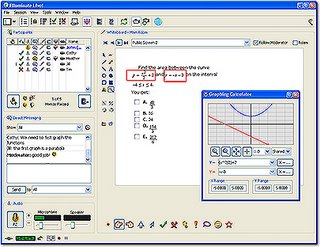
As MasterCard(R) puts it so well, some things money just can't buy -- or shouldn't have to! When it comes to educational tools, we're just beginning to see companies, groups, organizations and individuals offer valuable resources at no financial cost. Call it open source, Web 2.0 or just plain old altruism, hopefully the "generosity" will continue bringing valuable tools to those that can put it to incredible educational use.
Here are some wonderful FREE tools for teachers to use in pursuit of educational excellence (NOTE: all are cross-platform... Mac/PC... unless otherwise stated):
ASSESSMENT
• Rubistar - Search for, create your own rubrics and save them online or download a copy
• PBL Checklists - Problem Based Learning checklists that can be used for many types of projects, but especially suited for PBL
• Zoomerang - One of many "free or fee" online survey creation and deployment tools; up to 100 responses and data stored for 10 days -- results can be copied/pasted into Word or Excel
IMAGES/VISUALS
• Picassa (WinXP only) - Similar to Apple's iPhoto, it's a wonderful tool to sort, touch-up and manage digital images
• Google Earth (now for both PC & Mac) - "Google Map on steroids"... Wonderful images from satellite pictures; often used on TV news stations
• Cmap Tools - Concept Mapping - on your own computer or via vast shared Cmap network
• Flickr - Create an image storage site or digital story on a given topic
SOUND/PODCASTING
• Audacity - Sound recording and editing
• PodOmatic - Online podcast creation or uploading and management/RSS
• Vodcaster - For publishing/RSS audio and video podcasts
Please let us know if there are some we missed -- we'll continue to add to this post...











